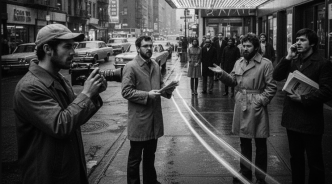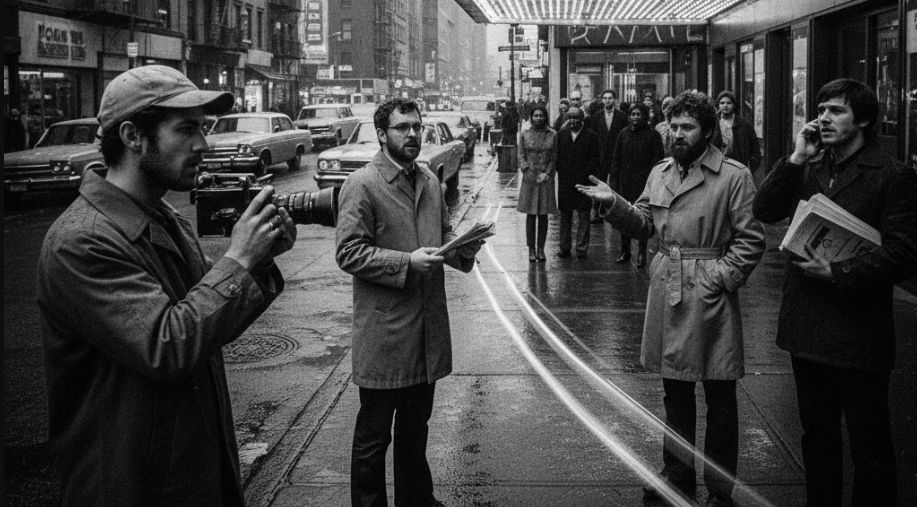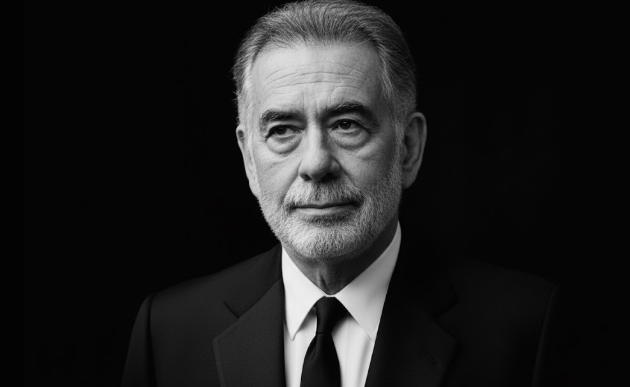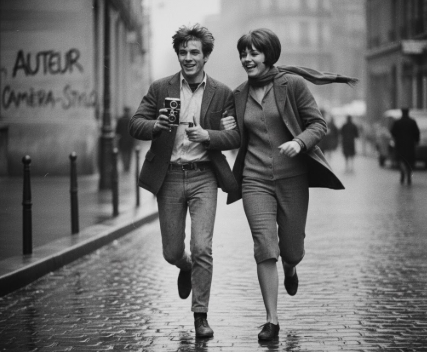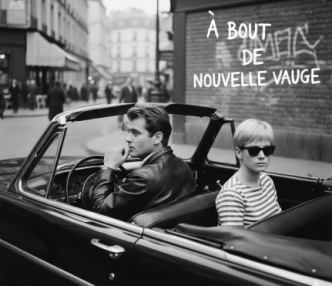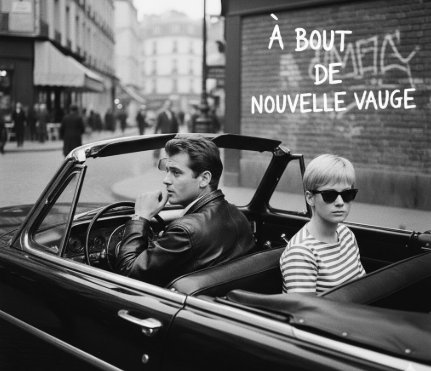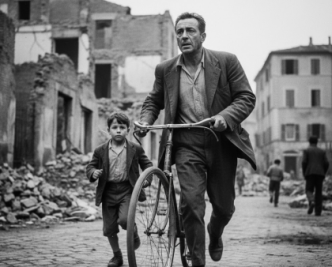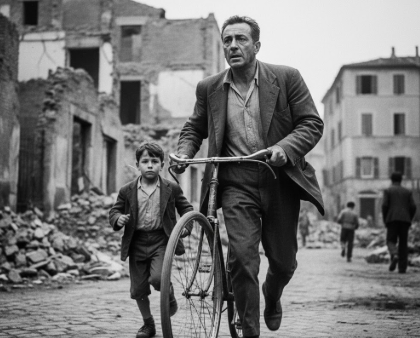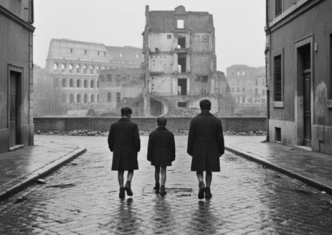In the late 1960s, the glittering facade of Old Hollywood was crumbling. The studio system, which had operated like a factory for decades, was losing its grip. Audiences were changing, and the old formulas were failing. Into this vacuum stepped a new generation of filmmakers—dubbed the “movie brats”—who didn’t just want to make movies; they wanted to remake cinema itself. This period, stretching roughly from the mid-1960s to the early 1980s, became known as the New Hollywood movement, a renaissance that prioritized the director as a true artist and forever changed the landscape of American film.
The Collapse of the Old Guard
The revolution didn’t happen overnight. It was the result of several seismic shifts that fatally weakened the old studio system.
- The Paramount Decree: For decades, the “Big Five” studios (MGM, Paramount, Warner Bros., Fox, and RKO) had operated a vertical integration monopoly: they produced the films, distributed them, and owned the theaters that showed them. A landmark 1948 Supreme Court case, United States v. Paramount Pictures, Inc., forced the studios to sell off their theater chains. This broke their stranglehold on exhibition, opening the door for independent and foreign films to find an audience.
- The Rise of Television: As suburban life boomed in the 1950s, audiences began staying home for entertainment. Studios, no longer able to count on a captive audience, hemorrhaged money on big-budget epics that failed to bring people back.
- The End of Censorship: The Motion Picture Production Code (or Hays Code), a strict set of self-censorship guidelines in place since 1934, had long neutered films of mature content. By the mid-1960s, the Code had become irrelevant and was officially replaced by the MPAA rating system in 1968. This allowed filmmakers to explore complex, adult themes, including frank depictions of sexuality and violence, that were previously taboo.
With their old business model broken and their content restrictions gone, the studios were desperate. They turned to a new generation of young, cine-literate directors who, inspired by the art-house movements of Europe, had a radically different vision for what an American movie could be.
A New Cinematic Language
The “movie brats” of the New Hollywood—figures like Francis Ford Coppola, Martin Scorsese, Robert Altman, George Lucas, and Steven Spielberg—were the first generation of directors to have been raised on cinema and, in many cases, to have studied it in film school.
Their primary influences were not the polished products of Old Hollywood but the revolutionary film movements from overseas:
- Italian Neorealism: This post-WWII movement, defined by directors like Roberto Rossellini (Rome, Open City) and Vittorio De Sica (Bicycle Thieves), championed shooting on real locations, using non-professional actors, and focusing on the social and economic struggles of ordinary people.
- French New Wave: Critics-turned-filmmakers like Jean-Luc Godard (Breathless) and François Truffaut (The 400 Blows) introduced a spirit of iconoclasm. They championed the “auteur theory,” the idea that the director is the true “author” of a film, imposing a personal vision across their work. Their films featured jump cuts, improvised dialogue, long takes, and philosophical themes of existentialism and alienation.
These influences coalesced into a new American style. New Hollywood films were personal, director-driven works that explored themes of alienation, counterculture, and disillusionment. They rejected clear-cut heroes and villains, instead focusing on morally ambiguous anti-heroes. This shift was announced with a one-two punch in 1967: Bonnie and Clyde and The Graduate. These films were critical and commercial hits that captured the rebellious, anti-establishment spirit of the youth generation, proving to the studios that this new, challenging style of filmmaking could be profitable.
Case Study: Deconstructing the American Myth
No genre demonstrates the New Hollywood transformation better than the Revisionist Western. The classic Western was a pillar of Old Hollywood, a vehicle for clear-cut morality, heroic cowboys, and the romantic myth of Manifest Destiny. The new generation tore that myth apart.
The Wild Bunch (1969): Sam Peckinpah’s film is often cited as a key revisionist text. It portrays its outlaw protagonists as crude, aging men trying to survive in a modernizing world. The film was revolutionary for its graphic and stylized violence. Using intricate, multi-angle, quick-cut editing mixed with slow-motion, Peckinpah didn’t just show violence; he forced the audience to confront its brutal, horrifying, and messy reality. This approach, reflecting the cynicism of the Vietnam War era, demystified the “heroic” gunfight forever.
McCabe & Mrs. Miller (1971): Robert Altman’s “anti-Western” took deconstruction even further. Its “hero,” John McCabe (Warren Beatty), is no stoic gunslinger but a bumbling, small-time gambler. The film dismantles the Western genre’s conventions, swapping sun-baked deserts for the grim, muddy Pacific Northwest and replacing themes of frontier justice with a bleak critique of capitalism. The climax is not a heroic shootout, but a pathetic, chaotic scramble for survival in a snowstorm, while the community, in a moment of bitter irony, ignores the individual’s plight to save their church—the town’s physical symbol.
The Party Ends: Blockbusters and Bombs
The era of the director-as-king was intense but short-lived. Its end was triggered by two factors—one a massive success, the other a colossal failure.
First, two of its own “movie brats” created a new, more profitable model: the summer blockbuster. Steven Spielberg’s Jaws (1975) and George Lucas’s Star Wars (1977) were high-concept, brilliantly marketed films that became cultural phenomena. Jaws was the first film to earn over $100 million, and its wide-release pattern, backed by a national TV campaign, invented the modern blockbuster strategy. Studios quickly realized that these four-quadrant “event” films were a much safer financial bet than the dark, personal, and risky projects of other auteurs.
The final nail in the coffin was Heaven’s Gate (1980). Fresh off his Oscar-winning success with The Deer Hunter, director Michael Cimino was given total creative control by United Artists. The production became a legendary disaster of auteurist hubris. Cimino’s perfectionism led to staggering delays and cost overruns, ballooning the budget from $11 million to $44 million—an astronomical sum at the time. The film was a critical and commercial catastrophe, ultimately bankrupting the legendary United Artists studio.
After Heaven’s Gate, the studios slammed the door shut. The era of handing directors a blank check and final cut was over. Hollywood pivoted, embracing the high-concept, producer-driven blockbuster model of the 1980s.
Though the New Hollywood movement itself died, its legacy is immeasurable. It challenged the very language of American cinema, normalized morally complex storytelling, and proved that films could be the product of a singular artistic vision. The spirit of the New Hollywood lives on, not in the summer blockbusters it ironically helped create, but in the independent film movement and the “prestige” cinema that continues to prioritize the auteur’s voice.

Dario Loce is the founder and editor of Celebrimous. He is a lifelong film enthusiast and the author of several locally-published books on cinema history and analysis. His passion is deconstructing the “how” and “why” of filmmaking, from the director’s vision to the editor’s cut. When not lost in a classic film, he’s usually walking through the city, replaying scenes in his mind like unfinished stories.
